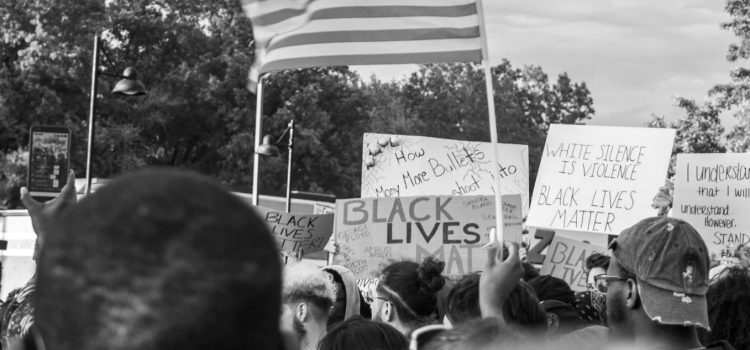

This article is an excerpt from the Shortform book guide to "Caste" by Isabel Wilkerson. Shortform has the world's best summaries and analyses of books you should be reading.
Like this article? Sign up for a free trial here .
Is there still a caste system in the United States? What lasting effects did the caste system of the early United States have?
Despite the fact that slavery was abolished in the 1800s, there are still many lasting effects of the racial caste system in the United States. Many Southerners still cling to Confederate symbols and consider the Old South a “Lost Cause,” healthcare has fallen behind because of racial agendas, and Confederate statues are still spread all over the country.
In this article, we’ll discuss the ways the caste system has left a lasting impact on the United States.
The Lasting Effects
The United States caste system’s impact goes beyond just the political arena. In this article, we’ll explore the way the U.S. memorializes the worst days of its caste system and how that approach compares to the way modern Germany memorializes the Nazi’s reign of terror.
Confederate Pride
One way in which the legacy of caste remains visible in American society is through ongoing Confederate Pride and memorialization. According to Wilkerson, the Confederacy, or the Confederate States of America, was an anti-democracy, pro-slavery group of states that seceded from the United States after the election of Abraham Lincoln. The Confederacy is not part of the American heritage, but rather a separate faction of 11 states that banded together to overthrow the national government to gain their sovereignty. (Shortform note: The Confederacy was small compared to the Union (the name for the collection of states that did not secede from the country), but not so small as to be insignificant. The Union population was about 18.5 million, and the population of the Confederacy was about half that, with 5.5 million free people and 3.5 million enslaved.)
The Confederacy lost the civil war in 1865, and the 13th Amendment officially ended slavery shortly thereafter. Wilkerson describes how Confederate leaders were not prosecuted for treason—instead, they were given amnesty. This lack of punishment allowed these men and their cause to stand as a symbol of passion and pride, rather than the immoral treachery it was. (Shortform note: While Confederate leaders ultimately faced little punishment, President Andrew Johnson (who succeeded Abraham Lincoln) was initially so determined to prosecute them that many Confederate leaders fled to other countries to escape punishment in the immediate aftermath of the war. However, Johnson ultimately softened his approach and signed over 12,000 pardons.)
After the war, monuments and memorials celebrating Confederate leaders cropped up in southern communities. People who’d survived slavery and their descendants were forced to live in environments that celebrated the behaviors of those who fought to permanently remove their agency. Today, more than 1,700 Confederacy monuments sit in town squares, outside courthouses, and in front of schools in America. (Shortform note: Wilkerson’s source for this number is the 2019 version of the “Whose Heritage?” project, run by the Southern Poverty Law Center (SPLC). As of early 2021, the SPLC has identified nearly 400 additional Confederate symbols, for a new total of 2100.)
The Debate Over Memorializing Hate
As the 20th century turned into the 21st century, the debate over the glorification of these enemies of state blossomed. According to Wilkerson, many in the dominant caste held fast to their beliefs that Confederate leaders were heroes who represented the pride of the South, while opponents saw the monuments as a slap in the face to equality. They believed celebrating the Confederacy was a celebration of a period of time when Blacks were legally enslaved, tortured, and killed.
Wilkerson describes how this tension came to a head in Charlottesville, Virginia in Summer 2017. A group of white supremacists held a rally in downtown Charlottesville to protest the city’s plan to remove a statue of Confederate General Robert E. Lee. The previous night, this group marched through the University of Virginia’s campus chanting “Sieg Heil.” (Shortform note: “Sieg Heil” is German for “Hail Victory” and was the Nazi party’s favored slogan.)
Wilkerson describes how, that day in Charlottesville, the rallyists stood waving both Confederate flags and flags imprinted with swastikas, drawing a direct connection between Confederate pride and the Nazis. A counter group formed, and a white supremacist drove his car into their gathering, killing a white woman and injuring several others.
| Confederate Monuments Represent the “Lost Cause” of the Old South Wilkerson doesn’t go into detail about why modern white Southerners are so dedicated to preserving Civil War monuments. The reason is: Glorifying Civil War leaders is a central tenet of the “lost cause” of the Confederacy, which is the idea that the Old South represents an idyllic form of life and the height of American honor. The “lost cause” began in the immediate aftermath of the Civil War and became part of the public consciousness through films like Gone With the Wind that glorify Southern antebellum life—slavery included. Modern believers in the “lost cause” resist the push to remove Confederate monuments because they believe that the Civil War was more about states’ rights than slavery, that most slaves were kept in humane conditions, and that enslaved people were endlessly loyal to their enslavers. Therefore, they categorically deny that Confederate symbols are symbols of racism. Opponents of “lost cause” ideology argue that this narrative is false, and that it has replaced the brutal historical reality of slavery in the minds of many Southerners. “Lost cause” believers resisted the removal of the Robert E. Lee statue in Charlottesville before and after the 2017 rally. However, in July 2021, the city officially removed the statue. According to Charlottesville Mayor Nikuyah Walker, removing the statue will help both the city and the country as a whole “grapple with the sin of being willing to destroy Black people for economic gain.” |
Remembering the Nazis
According to Wilkerson, the way America has chosen to remember the defenders of the caste system is much different from how Germany remembers theirs. The Germans have several memorials and monuments dedicated to the period in which the Nazis reigned, but they focus on remembering and learning from the events, rather than celebrating them.
For instance, the author describes how the Germans commemorate the memory of those who perished in the Holocaust with the stumbling stones, or brass palm-sized squares embedded into the ground throughout the city and other areas. These stones, which total more than 70,000, hold the names of victims. They are essentially headstones placed in front of the homes of the victims that force passersby to stop, bow to read them, and contemplate their meaning. (Shortform note: These “stumbling stones” extend beyond Germany into 21 additional European countries. They are now collectively the largest decentralized memorial in the world.)
Additionally, Wilkerson describes how the history of the Nazi party is a required part of the curriculum in German schools, and children are taught about the downfall of German society in allowing the mass murder of millions to happen. (Shortform note: Meanwhile, several American states have proposed laws that would prohibit teachers from teaching about the impact of slavery and discriminatory laws.)
The Germans don’t run from the memory of this brutal chapter in their history. They make every effort to educate through memorials, museums, and curriculums so the evil of those times is ingrained in their culture and will never be allowed to happen again. (Shortform note: Unfortunately, even this proactive approach never fully stamped out antisemitism in Germany. In 2019, Jewish people were the targets of nearly 25% of hate crimes in the country.)
The dichotomy between this cultural admonishment of the German caste system and the celebratory nature of America’s is significant in understanding the way America is today. The unwillingness of Americans to address the realities of slavery as more than just a blemish distorts the seriousness of the issues and related crimes against humanity. Modern Americans can separate themselves from the responsibility of defending justice and equality because they’re not forced to acknowledge the abuse and oppression on which their lives are built.
(Shortform note: To further illustrate how prevalent reminders of the caste system are in Germany compared to the U.S., and thus how the mindsets of the two countries differ, let’s compare them based on size and number of memorials. There are 26 Holocaust memorials in Germany, which means there is one memorial about every 5,300 miles. To contrast, the United States is about 28 times larger than Germany but has just 12 memorials to victims of slavery—or one memorial every 316,000 miles. In other words, in America, it’s much easier to forget or ignore the horrors of slavery because visual reminders of it are so few and far between.)
Stuck in the Past
In addition to the debate over Confederate monuments, Wilkerson argues that another lasting impact of the United States caste system is the fact that America lags behind other countries on various measures of wellbeing. For example, most comparable nations have some form of social or affordable health care for their citizens, but Americans have resisted a national health care system that helps the less privileged.
(Shortform note: While opposition to national healthcare is often cloaked in concerns about socialism, Wilkerson is not the only author to suggest that the underlying motivations have everything to do with race. For instance, in A Promised Land, former president Barack Obama describes how the racially-motivated, right-wing Tea Party posed one of the biggest obstacles to passing the Affordable Care Act.)
According to Wilkerson, America lags behind on other measures as well.
- No other developed nation experiences the types of mass shootings that occur in America, and America is a leader in both gun deaths and gun ownership.
- The United States incarcerates a higher percentage of its citizens than any other country. More than 2.2 million Americans are incarcerated.
- The mortality rate of women during pregnancy and childbirth is the highest among wealthy nations.
- The United States ranks 18th on the world scale for happiest citizens, a decrease from 11th place in 2012.
For all of its wealth, power, and prestige, the United States is far behind in terms of quality of life and social and political progress. Wilkerson believes the defining factor that separates America from other nations is the original narrative of the caste system, which has held the nation hostage since its inception. A caste system created a society concerned with their own best interests and lacking empathy for others.
| Black America Fares Even Worse on Measures of Wellbeing The statistics that Wilkerson cites above only tell half the story: For nearly every metric she mentions, Black Americans fare worse than white Americans. Black men and boys are 20 times more likely to be killed by a gun than white men and boys. Black Americans are nearly six times more likely to be incarcerated than white Americans. Black women are three times more likely to die during pregnancy or childbirth than white women. Black people are significantly less likely to report being “very happy” than white people (although this gap has narrowed over time). These disparities support Wilkerson’s conclusion that what truly holds America back on the world stage is the caste system. If we improve these measures for those in the lowest caste, it would improve the country’s overall averages. Furthermore, focusing on improving life for those in the lowest caste can have far-reaching benefits: For example, some economists have suggested that the best way to improve the overall post-pandemic economy is to focus on supporting Black women. |

———End of Preview———
Like what you just read? Read the rest of the world's best book summary and analysis of Isabel Wilkerson's "Caste" at Shortform .
Here's what you'll find in our full Caste summary :
- How a racial caste system exists in America today
- How caste systems around the world are detrimental to everyone
- How the infrastructure of the racial hierarchy can be traced back hundreds of years






